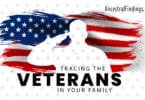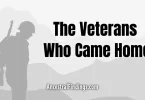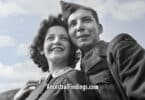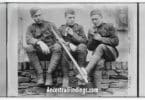When the Second World War ended in 1945, it didn’t just bring a global conflict to a close — it launched millions of lives into motion. Soldiers, sailors, nurses, airmen, and civilians who had served in some capacity returned to a nation that was about to shift in almost every possible way.
For many of our family members, the post-WWII years weren’t about returning to normal — they were about starting something entirely new. They rewrote their lives from scratch.
And the paper trail they left behind is worth following.
The GI Bill and a Whole New World
The Servicemen’s Readjustment Act of 1944 — better known as the GI Bill — opened doors that earlier veterans could only dream of. It offered education, home loans, and job training. It helped create the American middle class and shaped what many think of as the “typical” mid-century lifestyle.
Your ancestor might’ve:
- Attended college or trade school for the first time
- Bought a house with low or no down payment
- Started a small business with a government-backed loan
- Moved from a rural area into a new suburb
- Enrolled in night classes while working full-time
Even if your WWII-era ancestor didn’t talk much about the war, you might notice a sudden change in their life right around 1945–1950 — a different job, a new address, or even a brand-new family. These clues point to how the war gave them the chance (or the push) to begin again.
New Towns, New Names, New Stories
The 1950 U.S. Census is the first to show that major shift in detail. Veterans from farming towns in Iowa show up working in factories in Michigan. Sons of coal miners in West Virginia become engineers in California. Women who served in clerical or medical roles during the war became working professionals in peacetime — sometimes the first in their family line.
Many of these changes weren’t just practical — they were personal. Some veterans changed their names. Some distanced themselves from old family ties. Others remarried, adopted children, or started blended families. And some started fresh in brand-new communities where no one knew who they had been before the war.
If you have an ancestor who seems to “appear” in the records in the late 1940s or 1950s, it’s possible they had a different identity before that. War has a way of resetting timelines.
Tracing the Records of a Life Rewritten
Fortunately, this period is rich in documentation. You might find:
- GI Bill education records, especially if they attended college or vocational school
- VA-backed mortgage records, which often appear in property deeds
- Naturalization records, if they were immigrants who gained citizenship through service
- 1950 U.S. Census data, now searchable and incredibly detailed
- Newspaper mentions, especially for returning heroes, college graduates, or local business launches
- Military service discharge papers (DD-214s), which sometimes appear in state archives or personal family files
Don’t overlook employment records if your ancestor worked for a union, a major company, or the federal government. Those post-war jobs were often long-term and stable, and some records still survive in company or labor archives.
Women Veterans and the Quiet Shift
One of the less talked-about parts of post-WWII history is how many women served, and what happened to them afterward. From the Women’s Army Corps (WACs) to Navy WAVES to nurses in the Pacific, women returned to a country that largely expected them to fade into domestic life.
Some did — but others didn’t.
Many remained in the workforce. Some went to college on the GI Bill. A few married fellow veterans and built a life shaped by mutual service. Their stories are often underrepresented in family history, but they’re there — in school rosters, marriage records, VA records, and even employment files from government jobs.
Adoption, Relocation, and Secrets
Not everything about post-WWII life was celebratory. Some veterans returned with deep trauma and struggled to reconnect. Some left behind wartime relationships in Europe or Asia. Others had children born abroad. A few created new families in the U.S. without ever speaking about their past.
That’s why you may find:
- Adoption records involving veteran parents
- DNA matches that don’t line up with the known tree
- Foreign marriage records or birth records tied to wartime deployments
- Name changes or new Social Security numbers after the war
If you’ve hit a brick wall in your family history around 1945–1950, consider whether a WWII experience may have reshaped your ancestor’s identity, location, or family structure. Sometimes, solving these mysteries requires a combination of traditional research and DNA tools.
The Legacy That Shaped a Generation
The generation that came home from WWII didn’t just rebuild. They reimagined. They bought homes, raised families, went to school, started businesses, joined churches, and ran for office. They wrote a new kind of American story — one that shows up in school photos, property records, baby announcements, and graduation programs across the country.
If your ancestor lived through it, they didn’t just live after the war — they rewrote their life. And you can trace that story in the records they left behind.
It’s not just a matter of what they did in uniform.
It’s what they built once the uniform came off.






